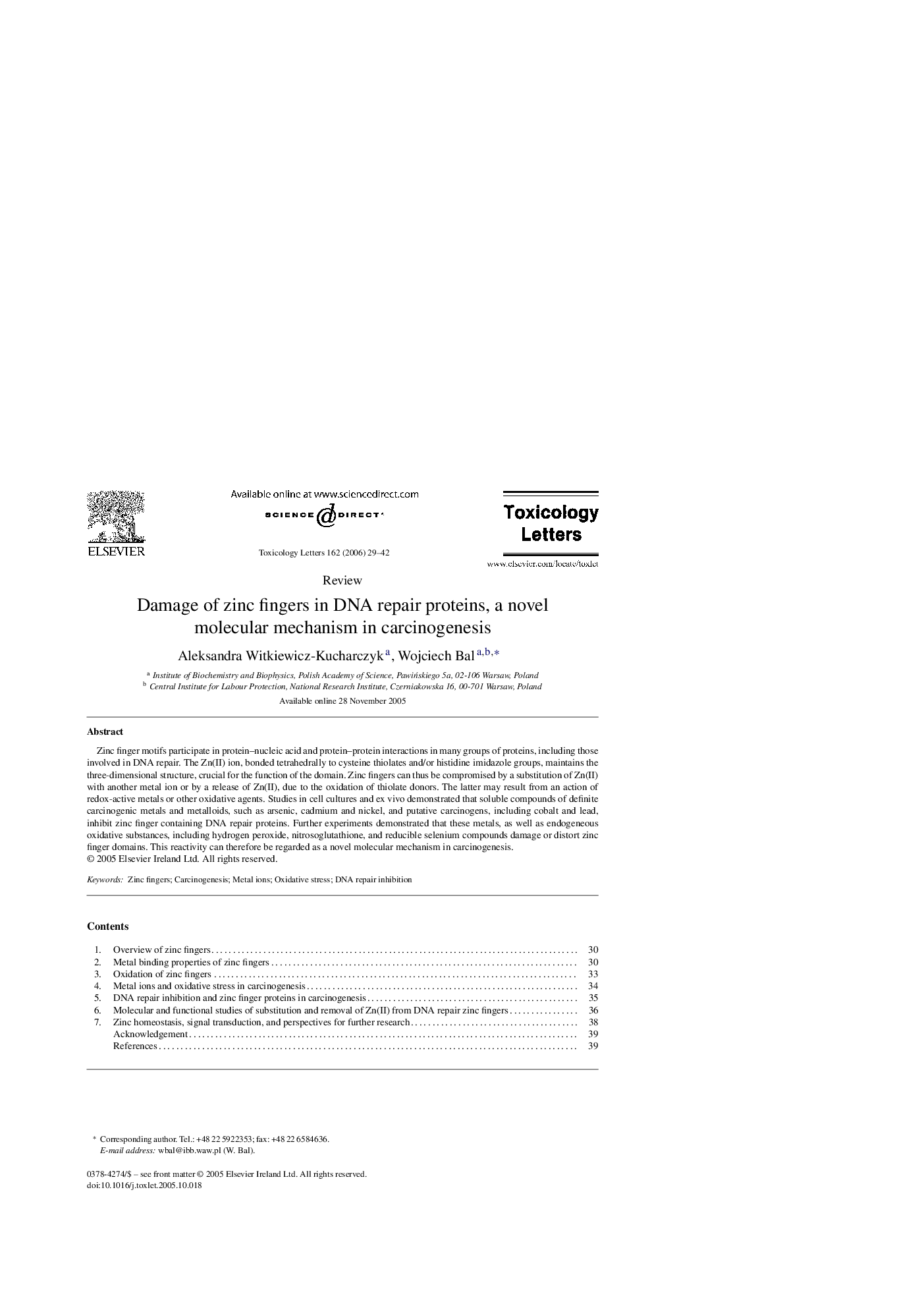| Article ID | Journal | Published Year | Pages | File Type |
|---|---|---|---|---|
| 2601391 | Toxicology Letters | 2006 | 14 Pages |
Zinc finger motifs participate in protein–nucleic acid and protein–protein interactions in many groups of proteins, including those involved in DNA repair. The Zn(II) ion, bonded tetrahedrally to cysteine thiolates and/or histidine imidazole groups, maintains the three-dimensional structure, crucial for the function of the domain. Zinc fingers can thus be compromised by a substitution of Zn(II) with another metal ion or by a release of Zn(II), due to the oxidation of thiolate donors. The latter may result from an action of redox-active metals or other oxidative agents. Studies in cell cultures and ex vivo demonstrated that soluble compounds of definite carcinogenic metals and metalloids, such as arsenic, cadmium and nickel, and putative carcinogens, including cobalt and lead, inhibit zinc finger containing DNA repair proteins. Further experiments demonstrated that these metals, as well as endogeneous oxidative substances, including hydrogen peroxide, nitrosoglutathione, and reducible selenium compounds damage or distort zinc finger domains. This reactivity can therefore be regarded as a novel molecular mechanism in carcinogenesis.
